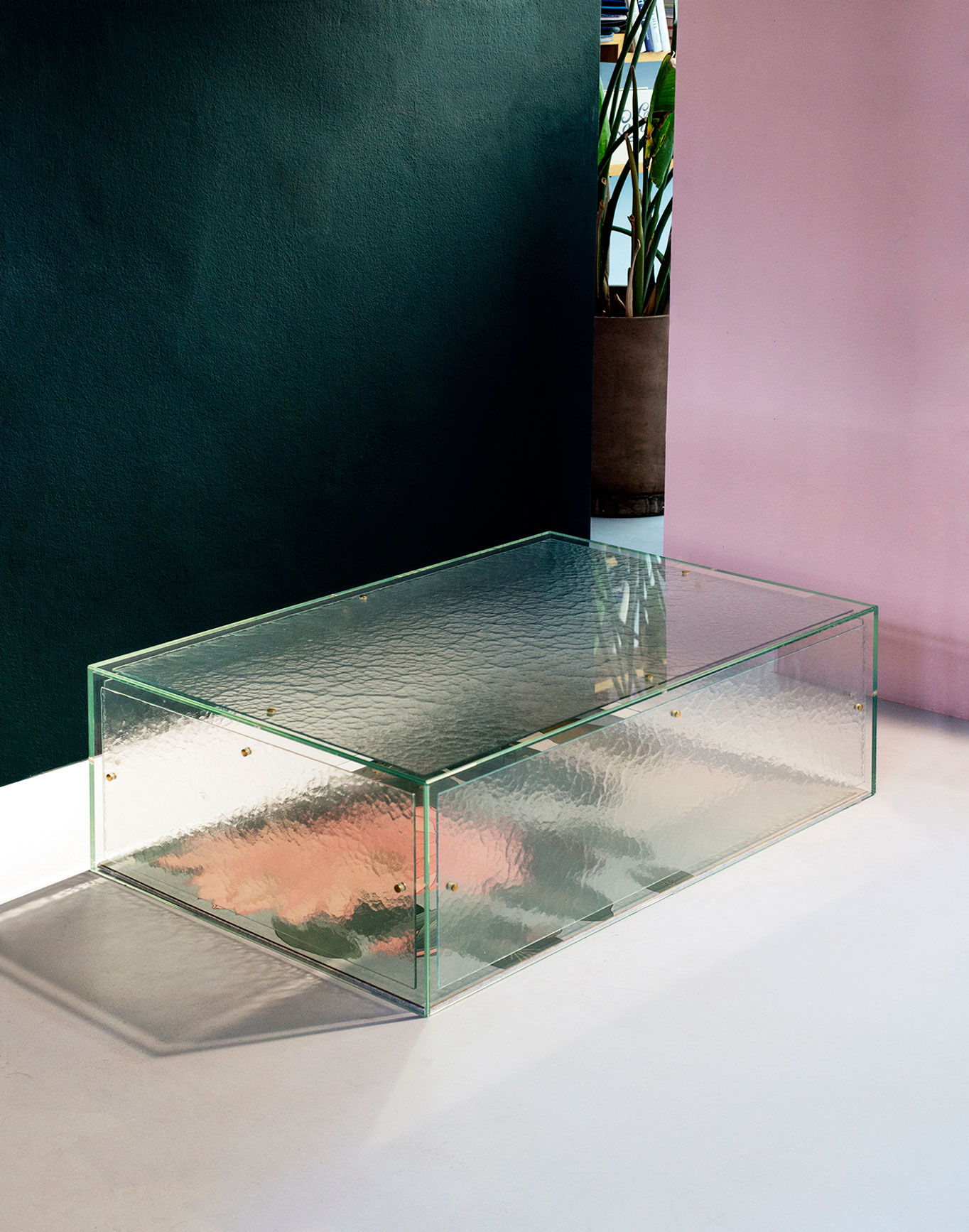DESIGN
IMPRESSIONISM
object series questioning the relation between technology and the art movement








In a poetic manner, Design Impressionism rethinks the interrelations of 19th century window glass production against a backdrop of emerging Impressionist painting.
The series consists of a coffee table on which digitally printed Japanese woodcarvings from the Rijksmuseum in Amsterdam are situated in a dialogue with traditionally handcrafted window glass. The glass of the mirror, which is produced in the same process and subsequently silver-plated, reflects the light and colors like a surface of water moved by the wind.
Background
The painting that gave the famous Louis Leroy’s article its title and earned an entire group of artists the designation as Impressionists was Claude Monet’s Impression, Soleil levant.
The artists had painted it in his birthplace of Le Havre, showing a view of the harbor from a window in his apartment. Everything in the pictures flickers and remains indistinct. The motif is merely an expression of the atmosphere or - and this is what we would like to explore in the following - it was exactly what he saw: a distorted image through the imperfections of the window he looked through.
In the 19th century, the majority of the glass windows were produced though first blowing large cylinders, which were then cut open and rolled out on an iron plate. The quality in comparison to windows as we know them was however rather poor. Large fluctuations in thickness, bums, and inclusions were almost inevitable. The effect of this glass creates a beautiful painting like impressions of whatever is seen through it.
Japonism
A major influence on Impressionism was Japanese art prints (Japonisme), which were brought into France after Japanese ports reopened to trade with the West in 1854.
In 1867, Japan held its first formal arts and crafts exhibition at the Paris Exposition Universelle. The exhibition attracted a great deal of interest and resulted in everything from Japan becoming stylish and fashionable. On the crest of this wave were woodcut prints depicting everyday life, celebrating the nonheroic, based on the idea that all is transient.
Japonism transformed Impressionist art by demonstrating that simple, transient, everyday subjects could be presented in appealingly decorative ways. The Impressionists, and Post-Impressionists, admired the use of flat, decorative shapes, bright colors, and asymmetrical compositions which assisted them in exploring new ways of painting and printmaking. The stylized featured in Japanese prints appeared also in Art Nouveau graphics, porcelain, jewelry, and furniture. New technologies in printing and publishing moreover allowed this new style to quickly reach a global audience.
Iron and Glass architecture - Greenhouses
The use of glass as a building material was heralded in the middle of the 19th century by Joseph Paxton’s Crystal Palace for the Great Exhibition. Glass and iron revolutionized architecture and introduced a new type of building - the greenhouse. Exotic plants could now grow in a controlled environment for the urban population seeking recreation.
The production of these big glass plates was possible through the rolled plate method, introduced by James Hartles in 1847. The technique involved glass being ladled onto a cast iron bed where it was rolled into a sheet with an iron roller. This method creates a ribbed finish on its surface. The table cathedral glass used in this project is produced with the same technique, generating identical effects.